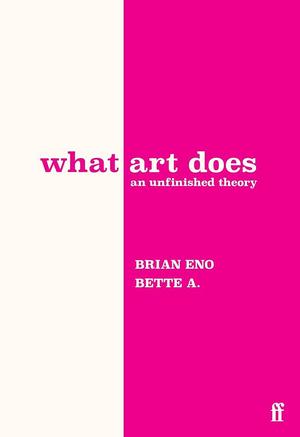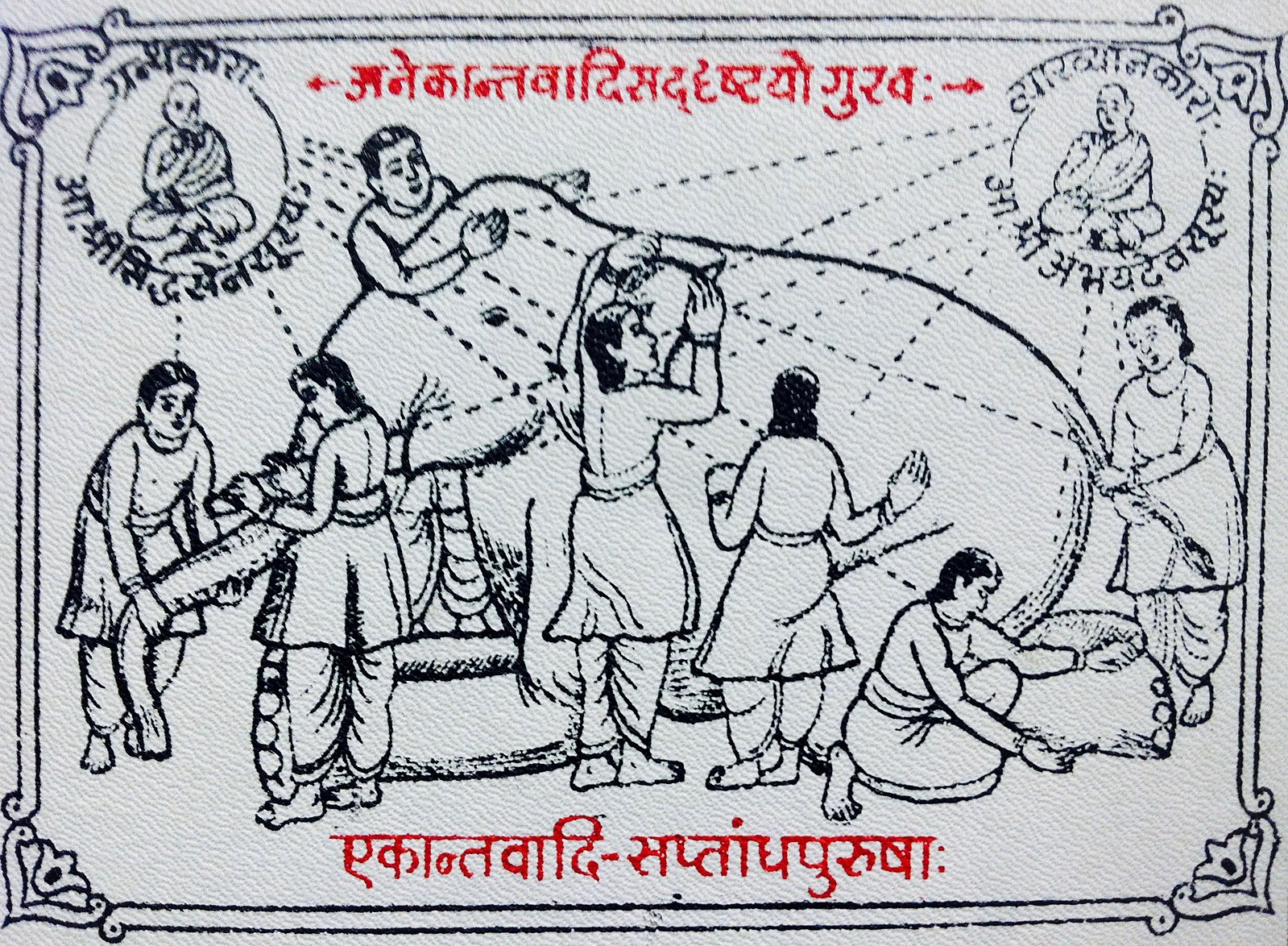What Art Does

I picked up this small book browsing Magma (an art store) in Covent Garden.
Making art is universal. We see it throughout human history from the etchings on caves, to the Sistine chapel to the way someone likes to arrange their hair.
But what is art? what role does it play? Why do we make it?
Eno stresses that for many, its such a central part of being, using phrases like ‘it helps me see/understand the world’, ‘helps me imagine new worlds’, ‘helps me heal, energise, forget, remember, disrupt, recognise, resist, forgive’.
So if we can’t answer these questions, it is no surprise that governments marginalise the arts or humanities in education in preference for STEM.
1. What is art?
Art in the book is used in the ‘broadest’ sense. It means things we traditionally think of as art : books, sculptures, symphonies, paintings, plays, films, poems, operas etc.
But it’s also “koi ponds, tutus, soap making, manga, kilts, bird watching, false breasts, stamps, perfume, karaoke, hair transplants, bodybuilding, birthday cards …” the list goes on
Art is :
All kinds of things where somebody does more than is absolutely necessary for the sake of the feeling they get by doing it
Instead of just wearing our clothes, we embroider them. Instead of just eating food, we decorate it, present it, experiment with it. Instead of using words, we construct poems.
“We all make art all the time but we don’t usually call it that… everytime somebody puts on their makeup, chooses their jewellery and clothes, dances this way or that, puts on a record, art is being made”.
He describes objects as having a utility function, but also an art function. The screwdriver head has a specific purpose, form and shape. But the handle, that can be decorated, played with - there is space for art there, in the colour, shape, size, material.
2. Why do we do art?
Art is a way of making feelings happen
Eno says that feelings are often downplayed in society. ‘Rationality means preferring thought’.
But as we know, both scientifically and experimentally (if you sit and play close attention) - feelings precede thought. They influence thought. Our visceral tactile sensations in the body, arise before the thought, and often the thoughts are coloured by the feeling we have in the body.
I love this sentence :
Feelings are faster (and sometimes completely wrong).
Logic and deduction are slower (and also sometimes completely wrong)
I think many of us know this. Eno says that most of the big choices in our lives - “who to marry, who to vote for, which job to take, whether or not to try to have children - aren’t based on just careful application of logic and deduction: we use our feelings”.
“Feelings are powerful precisely because they aren’t articulated”.
Importantly, art is imaginal, fictional - we can escape it. We can create feelings of bliss, joy, gratitude, but also feelings of terror (imagine a horror film), disgust, envy, heartbreak. But it’s harmless.
We can watch a war film, and experience brutality, death, murder, but not actually live through it. We can simulate the actual thing in a safe environment.
We can experience the heartbreak of a character in a move – but at a safe distance that turns it from real heartbreak into a feeling we can enjoy.
It allows us to explore the territory of our emotions, what we are capable of feeling, and what kinds of feelings we want.
Furthermore, it allows us to simulate ideas. What would happen if society burned all its books (Fahrenheit 451)? What would happen if we got everything we wanted, lived in blissed out states (Brave New World)? What would happen if aliens visited earth (too many to list)?
We can then use those feelings and ideas that art evoke, and spread it. People being influenced by art has changed the course of history multiple times, “advanced revolutions, bringing stone cold people to tears”. Eno says it why dictators often lock up artists or employ them as propagandists.
Art is world building. Eno says it’s easy to see how a novel like 1984 describes another world, but how would a choice of earring do that? That is art right?
Well, the fact that you chose that particular earring, out of the millions of possibilities, says something about the kind of world you envisage. What kind of world you inhabit and want to inhabit. “The colour might remind us of a beach vacation, or that new jagged shape suits our current political direction”.
In choosing it, you might be envisaging a “more romantic, or more eccentric or sexier or earther or crazier or saner or swashbucklier world!”. Same thing applies for the myriad of choices you make - they say something about how you see the world or want to see the world.
The feelings an art object creates (for example a painting) are personal and subjective. One person may look at a painting and feel nothing, another may feel a tremendous peace. This is influenced by their cultural conditioning, personal history and a myriad of other factors (what we call ’taste’).
Art doesn’t have to be for everybody. It can be for yourself (the choice of shoes) or it can be for the masses (the Beatles). It can be short lived (an internet meme) or span centuries (the Bible).
What matters is the feelings and thoughts it evokes.
3. Play
Play is how children learn.
Art is how adults play
Play is so critical for human development (I want to write a whole post on play, and I fear that kids today might be losing opportunities for it).
We know children deprived of play don’t flourish. Studies have shown that a loss of freedom of play leads to poorer mental health.
Play is one way we develop our locus of control; our agency. This is critical for children as play lets them start to exhibit agency in a local way - to control their own small world.
Children learn through play. They flit seamlessly between imaginary worlds they create, and the world as it appears, learning about materials, their bodies, how to cooperate.
This is why a screen-based upbringing that many kids are having today is so destructive. It only broadcasts, leaving the child as a consumer, rather than an active participator, world builder, a ‘player’.
Adults are just bigger kids though. We still need play! Art is just another word for it. We can simulate imaginary worlds, explore the terrain of possibilities and bathe in the feelings/thoughts/ideas it creates. We can play by ourselves, or with others. We can move our bodies and interact with the world, creating a sense of agency. ‘Creation’ and the act of autonomy is such a vital part of a flourishing human.
In playing, we learn about ourselves and the world; science too is based on play and imagination - we put forward conjectures (dreams/imaginings/ideas) and then error correct and test them.
I hope to explore play in another essay (it’s one of the topics gets me emotional when I see kids deprived of it, and also when adults forget how to do it!).
4. How does art change me (and us)?
Art suggests new places to direct our attention
I’m sure all of us can remember a time we’ve been entirely captured by a piece of art : a song that moved us to tears, a movie that caused us to re-evaluate or lives, or a book that opened your heart to a facet of human experience that was previously hidden.
Art changes us in profound ways. I remember Andrew Garfield on the modern love podcast saying “Art allows us to access places we wouldn’t be able to access otherwise”.
Being so moved by a piece of art tells you something about your priorities, and also allows you to discover what you truly like.
In this distinction, Eno distinguishes between shallow likes and deep likes.
Shallow likes are the “fleeting”, “induced” desires. They are usually programmed into you through advertising and social media.
Deep likes are ones that reveal our values, who we are and who we aspire to be. They are “persistent” and “generate feelings of happiness.” Think back to art that has profoundly moved you, shaped/revealed your priorities and constructed your world view.
Art directs our attention to things that we value. In doing so, you discover your deep likes. You discover how you want to feel. You discover what kind of worlds you want to inhabit and construct. It gets to the core of selfhood.
Art is proof of care
But art doesn’t just change individuals - it shapes how entire cultures see and feel.
If you imagine all ideas, worldviews, beliefs existing in a cloud. Much of contents of the cloud are entirely fictional ; they don’t exist in the real world - for example : Democracy, money, religions. They are shared memes.
Art allows us to introduce new memes, ways of seeings into the conversation. A “reservoir of shared experiences that gives us ways of sharing complex feelings and ideas with each other”.
We can see this clearly in how art has shaped the cultural zeitgeist. For example : Anti-war protest songs during the time of the Vietnam war, the “tank man” at Tiananmen square becoming a symbol of individual resistance to authoritarianism or Star trek TNG (a personal favourite of mine) bringing in notions of a post-racial, post-national, optimistic future.
Art can lead to transcendence
At a deeper level, art can lead to transcendent experiences. “All humans voluntarily engage in activities that involve surrender – sex, drugs, religion, art”. Surrender allows us to step away from our self, and immerse ourselves into ’the flow’. To loosen the grip of control that we’re conditioned to have, and momentarily surrender to the experience. A balance of control and letting go is what we need, but in modern day, we end up seeking more and more control.
Certain pieces of art can move you so much, that you are entirely absorbed, in surrender.
Conclusion
Humans are world builders. Literally your model of reality is constructed. We live in imaginal worlds - and being able to adopt ’new’ or adaptive ways of seeing such that we live in more beautiful, joyful, kinder worlds is a skill.
Going to a recent piece of art that moved me - this is an illustration depicting the philosophical principle of ‘Anekāntavāda’ - the doctrine of many side-ness or the idea that truth cannot be fully understood from a single perspective. It’s a depiction of the parable of the elephant and the blind men. Several blind men touch parts of the elephant and are adamant that they see the truth. One holds the trunk and says ‘its like a snake’, another touches the ear and says ‘its like a fan’, another the tail and says ‘its like a rope’ etc.

The red Sanskrit line at the bottom reads
Those who insist on only one viewpoint (ekānta-vāda) are like the seven blind men.
We each see our reality through a specific lens. We are world builders. To realise that our world view is malleable, not the whole truth and just a single perspective is liberating.
Art lets us do this. It let’s us simulate fictions, reveals our priorities and lets us craft the way we want to see the world.